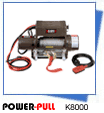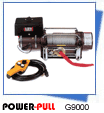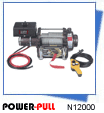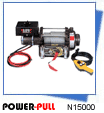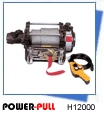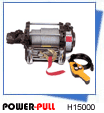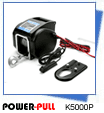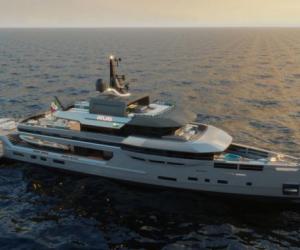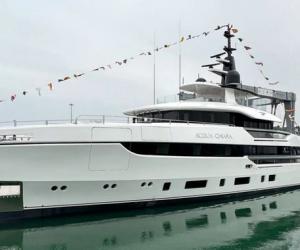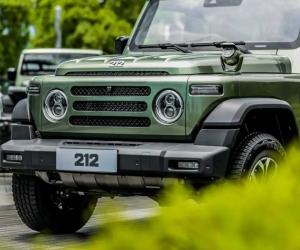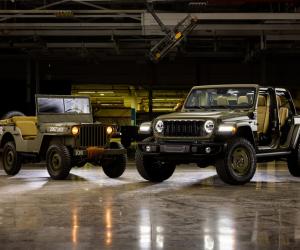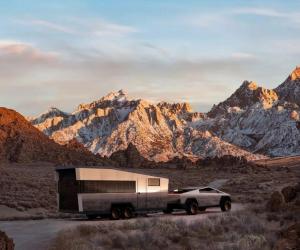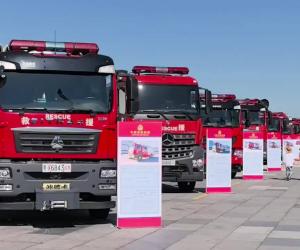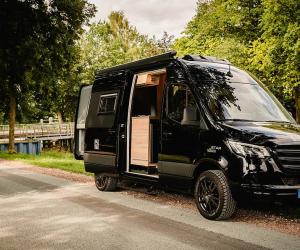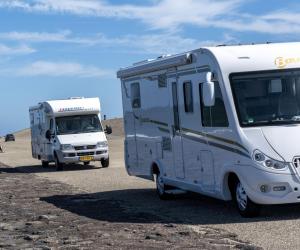维基百科上“ATV(All-Terrain Vehicle)”的介绍
All-terrain vehicle
The term "All-Terrain Vehicle" orATVis used in a general sense to describe any of a number of small open motorizedbuggiesandtricyclesdesigned foroff-roaduse. However, theAmerican National Standards Institute(ANSI) defines an ATV as a vehicle that travels on low pressure tires, with a seat that is straddled by the operator, and withhandlebarsfor steering control. By the current ANSI definition, it is intended for use by a single operator, although a change to include 2-seaters (in tandem) is under consideration.
The rider sits on and operates these vehicles like a motorcycle, but the extra wheels give more stability at slow speeds. Although typically equipped with three or four wheels, six-wheel models exist for specialized applications. Engine sizes of ATVs currently for sale in the United States (as of 2007) range from 50cc to 800cc.

A group of “quad” all terrain vehicles
ATV Terminology
Four wheeled versions are most commonly called "quads," "four-wheelers" or "ATVs" in the United States and Canada, and "quad bikes" or "quad cycles" in other English-speaking countries. Models with three wheels are typically known as "three-wheelers," and ATCs (or less commonly"All-Terrain Cycles"and "trikes").
ATVs can also be considered Off Highway Vehicles (OHV) or Off Road Vehicles (ORV), along with motorcycles, Jeeps and other off-road capable machines.
History and Development
Early days
ATVs were made in the United States a decade before 3- and 4-wheeled vehicles were introduced by Honda and other Japanese companies. During the 1960s numerous manufacturers offered similar small off-road vehicles, that were designed to float and were capable of traversing swamps, ponds and streams as well as dry land. Typically constructed from a hard plastic or fiberglass "tub", they usually had six wheels - all driven - with low pressure (around 3 PSI) balloon tires, no suspension (other than what the tires offered) and used a skid-steer steering setup. These early amphibious models were the original all-terrain vehicles - orATVs. Contrary to todaysANSIdefinition of an ATV, they were intended for multiple riders, sitting inside, and would usually have steering wheels or control sticks rather than motorcycle-type handle bars as stipulated in the current definition.
Since the advent of three- and four-wheeled, straddled ATV's, these have more or less 'taken over' the term, leaving the 6x6 and 8x8 floating variety now mostly known asAATVs (Amphibious All-Terrain Vehicles). Current brands of these machines includeArgoandMAX. Though not as fast as other ATVs, they can be operated with precision at slow speeds, and of course, have the ability to float. The spinning action of the tires is enough to propel the vehicle through the water, albeit slowly. Outboard motors can be added for extended water use.
Three wheelers
Honda made the first three-wheeled ATVs in 1970, which were famously portrayed in theJames Bondmovie, "Diamonds Are forever". Dubbed the US90 and later - whenHondaacquired the trademark on the term- theATC90, it was designed purely for recreational use. Clearly influenced by earlier ATVs, it featured large balloon tires instead of a mechanical suspension.By the early 1980s, suspension and lower-profile tires were introduced. The 1982 Honda ATC200E Big Red was a landmark model. It featured both suspension and racks, making it the first utility three-wheeled ATV. The ability to go anywhere on terrain that most other vehicles could not cross soon made them popular with US and Canadian hunters, and those just looking for a goodtrailride. Soon other manufacturers introduced their own models.
Sport models were also developed by Honda, which had a virtual monopoly on the market, due to effective patents on design and engine placement. The 1981 ATC250R was the first high-performance three-wheeler, featuring full suspension, a 248-cubic-centimetre two-stroke motor, a five-speed transmission with a manual clutch and a front disc brake. For the sporting trail rider, the 1983 ATC200X was another landmark machine. It has an easy-to-handle 192-cubic-centimetre four-stroke that was ideal for new participants in the sport.
Four wheelers
Suzukiwas a leader in the development of 4-wheeled ATVs. It sold the first ATV, the 1983 QuadRunner LT125, which was a recreational machine for beginners.
In 1985, Suzuki introduced to the industry the first high-performance 4-wheel ATV, the Suzuki LT250R QuadRacer. This machine was in production for the 1985-1992 model years. During its run, it underwent three major engineering makeovers. However, the major core features were retained. These were: a sophisticated long-travel suspension, a liquid-cooled two-stroke motor and a fully manual 5-speed transmission for 85-86 models and a 6-speed transmission for the 88-92 models. It was a machine exclusively designed for racing by highly skilled riders. Honda responded a year later with the FourTrax TRX250R - a machine that has not been replicated.Kawasakiresponded with its Tecate-4 250. In 1987,Yamahaintroduced a different type of high-performance machine, the Banshee 350, which featured a twin-cylinder liquid-cooled two-stroke motor from the RD350LC street motorcycle. Heavier and more difficult to ride in the dirt than the 250s, the Banshee became a popular machine with sand dune riders thanks to its unique power delivery. The Banshee remains hugely popular, but 2006 is the last year it will be available in the U.S. (due to EPA emissions regulations). In Canada, however, the Banshee will be back for the 2007 model year, still featuring the same parallel-twin, 350cc, two-stroke engine that made the machine famous.

The ATV is commonly called a four wheeler in Australia. They are used extensively in agriculture
At the same time, development of utility ATVs was rapidly escalating. The 1986 Honda FourTrax TRX350 4x4 ushered in the era offour-wheel driveATVs. Other manufacturers quickly followed suit, and 4x4s have remained the most popular type of ATV ever since. These machines are popular with hunters, farmers, ranchers and workers at construction sites.
Safety issues with 3-wheel ATVs caused all manufacturers to switch to 4-wheeled models in the late '80s, and 3-wheel models ended production in 1987, due to consent decrees between the major manufacturers and theConsumer Product Safety Commission-- the result of legal battles over safety issues among consumer groups, the manufacturers and CPSC. The lighter weight of the 3-wheel models made them popular with some expert riders. Cornering is more challenging than with a 4-wheeled machine because leaning into the turn is even more important. Operators may roll over if caution isn't used. The front end of 3-wheelers obviously has a single wheel making it lighter, and flipping backwards is a potential hazard, especially when climbing hills. Rollovers may also occur when traveling down a steep incline. The consent decrees expired in 1997, allowing manufacturers to once again make and market 3-wheel models, though there are very few marketed today.
Models continue today to be divided into the sport and utility markets. Sport models are generally small, light,two wheel drivevehicles which accelerate quickly, have a manual transmission, and run at speeds up to 90 miles per hour (145 km/h). Utility models are generally biggerfour wheel drivevehicles with a maximum speed of up to 72.5 miles per hour (104 km/h). They have the ability to haul small loads on attached racks or small dump beds. They may also tow small trailers. Due to the different weights, each has advantages on different types of terrain.
Six wheel models often have a small dump bed, with an extra set of wheels at the back to increase the payload capacity. They can be either 4 wheel drive (back wheels driving only), or 6 wheel drive.

ATV racing on a motocross track
Racing models
Sport models are built with performance, rather than utility, in mind. To be successful at fast trail riding, an ATV must have light weight, high power, good suspension and a low center of gravity. These machines can be modified for such racing disciplines asmotocross, woods racing (also known as hare scrambles, cross country),desert racing,hill climbing,ice racing, speedway, TT (Tourist Trophy),flat track,drag racingand others. Examples of high-performance models include the Yamaha YFZ450, Honda TRX450R, Suzuki QuadRacer R450, Polaris Outlaw 500, Polaris Outlaw 525, Polaris Predator 500, and the Kawasaki KFX450R. ATVs designed for fast trail riding include the Yamaha Raptor 700R, Suzuki QuadSport Z400, Honda Sportrax 400EX, Bombardier DS650, and Arctic Cat DVX400.
Return to the ATV's amphibious roots ?
In May 2006 New Zealand inventor Alan Gibbs - the chairman and founder ofGibbs Technologies- presented TheQuadski, a prototype of an amphibious quad bike/ATV. Contrary to earlyamphibious ATVsthis design is mounted and controlled like modern Quad-bikes, as well as offerering the unique ability toplaneon water, enabling it to achieve speedboat-like velocities on water.
Criticisms of ATVs
Since the early 1990s, ATV use has tripled across the United States. This has led to greater conflict between ATV users and child-safety advocates, rural landowners, fellow outdoor recreationalists and environmentalists.
Safety Issues
Since the expiration of the consent decrees between the major manufacturers and CPSC in April of 1998, the manufacturers have entered into "voluntary action plans" that mimic the previously mandatory consent decrees. However, despite the move from 3-wheel to 4-wheel models and the action plans, some deaths and injuries still occur. Statistics released by CPSC show that in 2004, there were an estimated 136,100 injuries associated with ATVs treated in US hospital emergency rooms -- more than double the number of injuries treated in the last year of the consent decrees. In 2003, the latest year for which estimates are available, 740 people died in ATV-associated incidents.
The action plans in place with CPSC cover only certain manufacturers of ATVs. Other manufacturers that have entered the market since the expiration of the consent decrees are not covered by the action plans and so are not bound by the rules governing things such as labelling and safe marketing practices, and what ages a distributor may recommend a particular sized ATV for. These manufacturers and distributors, most of whom originate from Asia and Italy, are completely exempt of government oversight.
Focus has shifted since the consent decrees ended to attention to machine size balanced with rider age. Many states have enacted legislation specifically governing the usage of ATVs on state run land categorized by age ranges and engine displacements - in line with the consent decrees. ATVs are mandated to be labelled from the manufacturer that the use of machines greater than 90cc by riders under the age of 16 is prohibited. Critics point out that blanket policies concerning age are not sufficient and often use as example that early teen male children are physically larger and stronger than many adult women riders. Somelocalitieshave either bannedminors(typically those under 16 years of age) from using ATVs or are considering suchlegislation. Advocates of ATVs argue that starting younger improves safety. They recommend that children can develop the necessaryexpertiseby starting as young as 6 years of age instead of waiting until age 16. The U.S.Consumer Product Safety Commissionapproved the sale of sub-50cc ATVs for use by youngsters as young as age 6.
In 1988, the All-terrain Vehicle Safety Institute (ASI) was formed to provide training and education for ATV riders. The cost of attending the training is minimal and is free for purchasers of new machines. Successful completion of training such as provided here is in many states a minimum requirement for minor-age children to be granted permission to ride on state land.
EPA Concerns
Emissions
Due to the lack of emission controlling hardware and software, for year 2000 all recreational spark ignited (SI) non-road vehicles (of which ATVs are a subset) contributed 8% of HC, .16% of NOx, 5% of CO and .8% of PM emissions for the entire non-road EPA family. The entire range of non-road emissions accounted for 49% of engine produced emissions of all types.While recreational SI vehicles (of which ATVs are a subset) produce an aggregate of <4% of all HC emissions in the US, based on the relatively small population of ATVs (<1.2M) and small annual usage (<350 hrs), EPA emission regulations now include such engines starting with model year 2006.One company,ZAPhas begun to manufacture all electric ATV's using a hub motor design, which could eliminate EPA issues.
Fuel Economy
The EPA estimates that each ATV consumes less than 59 gallons of fuel per year and obtains between 40 and 50 mpg, making them not likely to fall under future fuel economy regulations. (Ibid. EPA 1)

Bankerosionstarted by four wheeler All-terrain vehicles, Yauhanna, South Carolina
Land Usage
Some ATV riders knowingly crossprivately owned propertyinruralareas and travel over public/private properties where their use is explicitly limited to trails. Subsequently,environmentalistscriticize ATV riding as a sport for excessive use in areas environmental movement-friendly biologists consider to be sensitive, especiallywetlandsandsand dunes. While the deep treads on some ATV tires are effective for navigating rocky, muddy, and root covered terrain, these treads also dig channels that may drainboggy areas, increasesedimentationin streams at crossings and damage groomed snowmobile trails. Studies have also shown that ATVs may help in the spread of invasive species such asknapweed. Despite some limited studies showing the impacts of unregulated ORV use, the vast majority of ORV use on public lands is regulated. Moreover, running counter to the popular misconception that ATV and ORV use is a leading cause of damage to the landscape and sensitive habitats in general, the overwhelming evidence of human growth patterns upon the landscape indicates damage to the sensitive habitats are caused by unmitigated growth of single-family housing planning and extractive industries.
To address these land usage concerns, ATV advocacy groups have been organized to purchase property and/or obtain permission of landowners, build and maintain trails suitable for ATV riding and educate ATV riders about responsible riding. Many states have also formed separate governing bodies that license ATVs separately than other ORVs. The monies from these registrations are used to secure trails to ride and perform grooming and maintenance.
Unfortunately, the image of the great majority of responsible riders is often tainted by the actions of some who ride off designated trails, on private land without permission, and under the influence of alcohol or drugs. Additionally, self-regulation has proven particularly difficult considering that the main public complaint against ATVs is excessive noise. Although the majority of ATVs comply with noise regulations, there are those whose intentional violation can disturb the activities of other recreational users for miles across open landscapes. Tampering with an ATVs exhaust silencer andspark arrestoris illegal on all federal lands and most state lands; however, enforcement is spotty. It is also possible to install aftermarket exhaust systems that do not have spark arrestors.
Fellow outdoor recreationists who have expressed concern about irresponsible ATV use include snowmobile users who resent improper use of exclusive snowmobile trails, ATV trail riders whose trails have been damaged by improper use, and hunters whose game has been driven off by those riding during prime hunting times.
Nationally, the US Forest Service considers managed ATV use to be a legitimate activity in national forests, yet it also lists their unregulated use as one of the four greatest threats to long term forest management. The US Forest Service recently released a national travel management plan designed to minimize the negative environmental impacts of ATVs while providing a safe, sustainable and enjoyable opportunity for ATV users.


